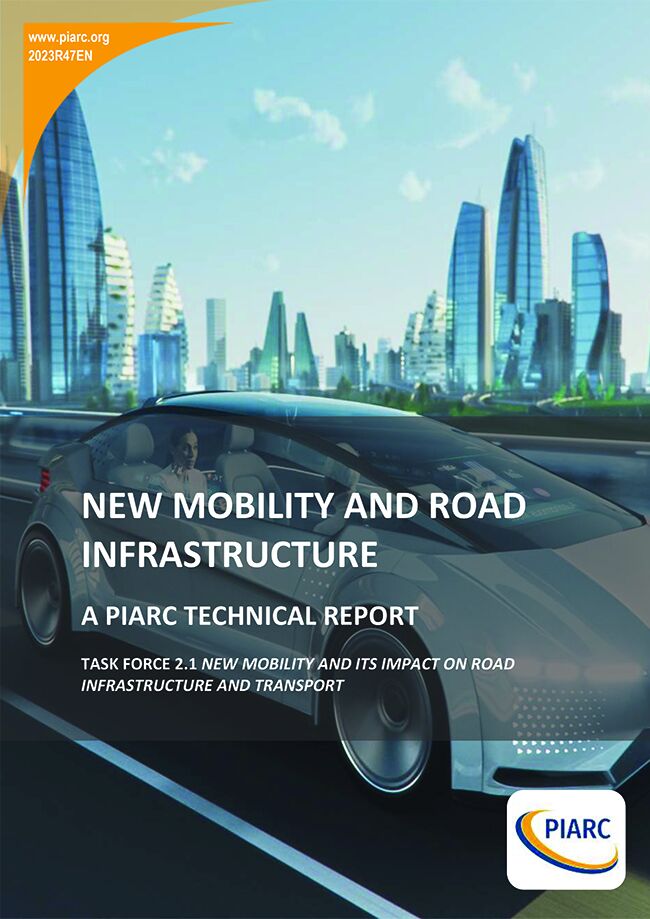New Mobility And Road Infrastructure - A PIARC Technical Report

PIARC has been concerned, for some time, about the challenges and opportunities presented by Connected and Autonomous Vehicles for Road Network Operators. These were explored by two Task Forces (B.1 and B.2) between 2018 and 2020 but have now been overtaken by the rapid and disruptive development of a wider range of technologies, digital tools and mobility services.
The new forms of mobility comprise the new types of vehicle and technologies that are starting to appear on streets and highways, as well new ways in which those vehicles are being used; including customer proposition, asset ownership, on-demand and shared services. A broader review of new mobility concepts and their impacts on road and transport infrastructure was therefore required which led to the need for a new Task Force 2.1 (New Mobility and Its Impacts on Road Infrastructure and Transport) which formed and commenced work in July 2022.
A wide range of emerging conclusions are presented. In the very long-term, new mobility initiatives will have a significant impact on the planning, design, construction, and operation of road infrastructure. By considering these implications, supporting practical Operational Design Domains, and adapting to the changing transportation landscape, RNOs can make more limited changes to support early deployment and contribute to the development of more efficient, sustainable, and resilient transportation systems.
C-ITS offers numerous benefits for improving road network operation, enhancing safety and smoothing traffic. A collaborative approach is highly recommended to maximize C-ITS effectiveness, including establishing public-private initiatives and joint strategies to collect, share and utilise data from vehicles and road users on a consistent and efficient basis. Issues such as communication design, resource allocation, and redundancy in system-crucial components also need to be considered.
The transition to Mobility-as-a-Service (MaaS) concepts requires the consideration of interconnected issues such as road safety, sustainable mobility, prioritising use of assets and road space, and relies upon collaboration among stakeholders across the private and public sectors. Compliance with regulations and standards, which also require adaptation, is crucial to achieving the right balance between safety, innovation, reliability, consumer trust and standardized dissemination of information. Understanding user needs and addressing social implications are if the desired impacts and benefits are to be achieved.
Finally, innovative mobility solutions will have a range of implications for the future design and operation of physical road infrastructure, although significant uncertainty currently exists on precise adaptations required. New mobility will also generate a range of financial, commercial, business model, social and development impacts which must be carefully considered so that innovation can be encouraged whilst promoting public value, inclusivity, and sustainable outcomes. Whilst this applies to countries at all stages of development, the use cases, business cases and capacity of road operators to support new delivery models will be very different in LMICs compared to High Income countries.
Information sheet
- Date: 2023
- Author(s): Groupe d'étude / Task Force / Grupo de estudio 2020-2023 2.1 Les nouvelles mobilités et leur impact sur les infrastructures et le transport routiers / New Mobility and its Impact on Road infrastructure and Transport / Nueva movilidad y su impacto en la infraestructura vial y el transporte
- Type: 2023R47EN - PIARC Technical Report
- PIARC Ref.: 2023R47EN
- ISBN: 978-2-84060-839-4
- Number of pages: 73